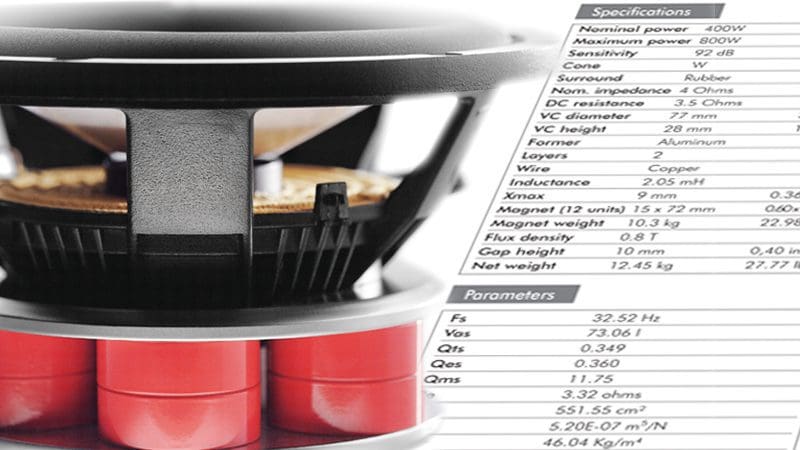 If you are a mobile electronics enthusiast like we are, then it’s quite possible that you enjoy reading product specifications. You can learn a lot about the design and application of a product from the specs. Amplifier power ratings are probably the most popular specs, but there are a lot more. One product specification that tends to confuse people more than help them is speaker efficiency. This article explains what the numbers mean and how you should analyze the appropriateness of subwoofer specifications, one subwoofer to another.
If you are a mobile electronics enthusiast like we are, then it’s quite possible that you enjoy reading product specifications. You can learn a lot about the design and application of a product from the specs. Amplifier power ratings are probably the most popular specs, but there are a lot more. One product specification that tends to confuse people more than help them is speaker efficiency. This article explains what the numbers mean and how you should analyze the appropriateness of subwoofer specifications, one subwoofer to another.
Speaker Efficiency
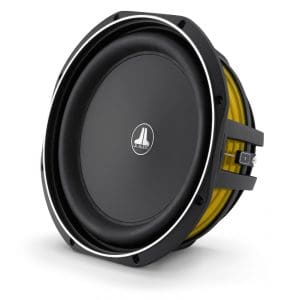 In a nutshell, the efficiency specification attempts to quantify how much sound a speaker will produce when provided with a given amount of power. Manufacturers provide the specification in two common methods. The most common are decibels of output when fed with 1 watt of power and measured at 1 meter from the speaker, written as 1 W/1 m. The other specification method involves replacing the 1 watt power measurement with 2.83 volts. For a 4 ohm car audio speaker, 2.83 volts works out to 2 watts of power or 4 watts into a 2 ohm speaker. Make sure to take the impedance of the speaker into consideration with the latter format.
In a nutshell, the efficiency specification attempts to quantify how much sound a speaker will produce when provided with a given amount of power. Manufacturers provide the specification in two common methods. The most common are decibels of output when fed with 1 watt of power and measured at 1 meter from the speaker, written as 1 W/1 m. The other specification method involves replacing the 1 watt power measurement with 2.83 volts. For a 4 ohm car audio speaker, 2.83 volts works out to 2 watts of power or 4 watts into a 2 ohm speaker. Make sure to take the impedance of the speaker into consideration with the latter format.
For a subwoofer, we derive this efficiency number with a formula that includes the driver’s resonant frequency, equivalent suspension compliance and driver’s electrical Q. In reality, the resulting number is purely theoretical and applies most directly to output in the frequency range above where most subwoofers play. There is the heart of the matter: The efficiency specification doesn’t describe how loud the subwoofer is at low frequencies. The only way to predict and compare performance is to model the behavior of the driver in simulation software.
Frequency Response Simulation
Let’s compare two 10-inch speakers. For sample A, we will use a very high-quality car audio subwoofer. Since we want to make this example somewhat extreme, we will use a 10-inch pro audio woofer as Sample B in our comparison. We will use BassBox Pro 6 to make the comparisons.
Sample A has a calculated efficiency of 93.21 dB when driven with 2.83 V. Sample B has an efficiency of 95.07 dB. Without modeling the low-frequency behavior of the driver, you’d happily think that Sample B was the louder of the two by 1.86 dB.
We modeled each driver in a sealed enclosure with a volume that provides a total system Q (Qtc) of 0.707. The car audio subwoofer is in 0.694 cubic feet, and Sample B is in 0.378 cubic feet net.
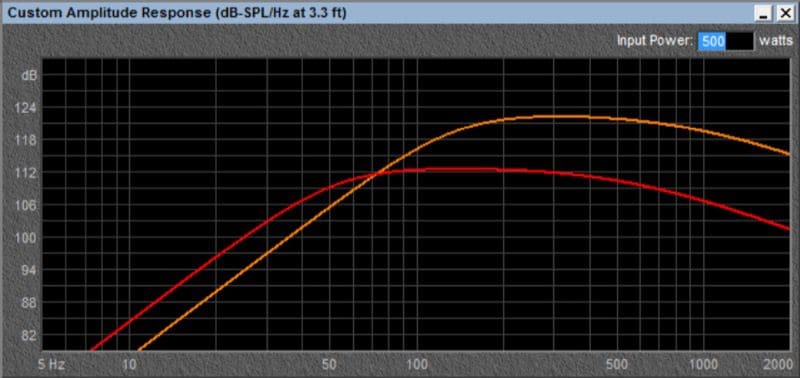 As you can see from the graph, the output of the two woofers varies dramatically. Sample A is louder at 40 Hz by an impressive 4.95 dB. That is contradictory to the efficiency specification, isn’t it? It is, however, not wrong.
As you can see from the graph, the output of the two woofers varies dramatically. Sample A is louder at 40 Hz by an impressive 4.95 dB. That is contradictory to the efficiency specification, isn’t it? It is, however, not wrong.
Subwoofer Specifications
When an engineer designs a speaker, the first thing to decide is the application. Will this be a high-SPL car audio speaker, or a pro-sound speaker? The differences make a great deal of difference.
Our sample subwoofers also have dramatically different excursion capabilities. Sample A has an Xmax of 17.6 mm and Sample B has an Xmax of only 4 mm. It is worth noting and reminding everyone that cone excursion quadruples for every halving of frequency. If these speakers were given enough power to play 100 dB at 80 Hz with an excursion of 1 mm, then they would need to move 4 mm at 40 Hz. At 20 Hz, they would need to move 16 mm. An excursion requirement of 16 mm is no problem for Sample A, but will likely rip Sample B to shreds.
Comparing the output of two drivers requires that we ensure the driver can handle the excursion requirements necessary to meet our needs.
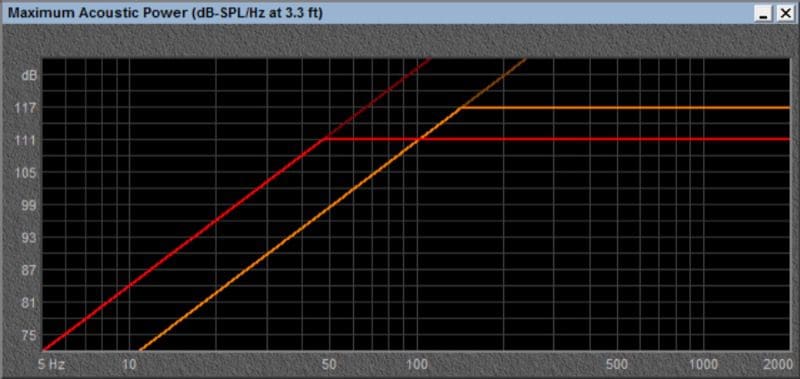 In the case of our subwoofer simulations, due to excursion limits, Sample B can produce a maximum output of only 94.9 dB at 40 Hz. Sample A can produce 108.3 dB at the same frequency. That is a difference of 13.4 dB. This difference is significant. Sample B simply cannot produce 100 dB of output at 40 Hz in this enclosure. Thus, Sample B not a suitable choice for a subwoofer, which makes sense, since it was designed to be a bass guitar speaker.
In the case of our subwoofer simulations, due to excursion limits, Sample B can produce a maximum output of only 94.9 dB at 40 Hz. Sample A can produce 108.3 dB at the same frequency. That is a difference of 13.4 dB. This difference is significant. Sample B simply cannot produce 100 dB of output at 40 Hz in this enclosure. Thus, Sample B not a suitable choice for a subwoofer, which makes sense, since it was designed to be a bass guitar speaker.
Choosing the Right Subwoofer
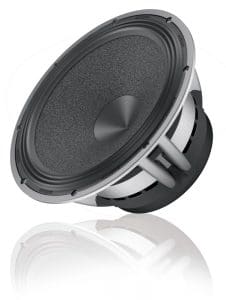 Unless you own speaker-modeling software and know how to use it, it can be tricky to determine the performance of one subwoofer versus another. Even more difficult is attempting to predict how one sounds when compared to another. Frequency response is just one of the many criteria that differentiate one subwoofer from another. Excursion capabilities, enclosure requirements, distortion characteristics and – of course – cost are all factors to be considered.
Unless you own speaker-modeling software and know how to use it, it can be tricky to determine the performance of one subwoofer versus another. Even more difficult is attempting to predict how one sounds when compared to another. Frequency response is just one of the many criteria that differentiate one subwoofer from another. Excursion capabilities, enclosure requirements, distortion characteristics and – of course – cost are all factors to be considered.
Many people think that just because it is harder to hear distortion at low frequencies, the design of a subwoofer matters less than that of a midrange speaker. You would be stunned at how a good subwoofer can bring out details in your music that you may have never heard before.
When it is time to go subwoofer shopping, visit your local mobile electronics specialist retailer. Discuss your needs with them and work with them to find a subwoofer solution that fits your application. You will be happy that you did.

like it